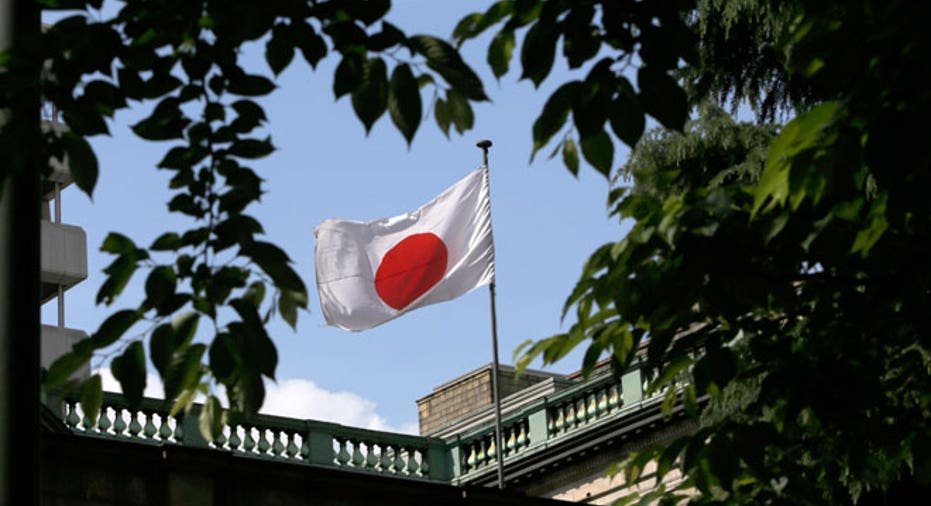Bank of Japan Easing Action Disappoints

The Bank of Japan announced a modest dose of stimulus Friday in a sign that it may be running up against the limits of monetary policy, disappointing investors who expected a bolder move to complement a new government spending plan to jolt the economy.
The central bank said it would buy Yen6 trillion ($58 billion) worth of exchange-traded stock funds annually, up from Yen3.3 trillion previously. It didn't change its target for purchasing Japanese government bonds or reduce its main interest rate--already in negative territory.
Markets reacted with disappointment, with the Nikkei Stock Average falling and the yen rising against the U.S. dollar.
The Bank of Japan already owns more than a third of all outstanding JGBs, with its balance sheet ballooning to 85% of gross domestic product as of May. Some people inside and outside the central bank have suggested that it couldn't expand its bond purchases much further without provoking instability in the market, a view that is likely to gain strength after Friday's decision.
Mari Iwashita, chief market economist at SMBC Friend Securities, said the BOJ's decision to leave its purchases of JGBs unchanged likely indicates a recognition at the central bank that expanding them would be unsustainable.
"The BOJ has been denying that it is hitting the limits of JGB buying, but it may have started to feel a sense of danger little by little," she said.
The central bank also faced resistance after it introduced a negative interest rate for the first time in February. The rate is charged on certain deposits held by commercial banks, and those banks objected that a further dive into negative territory would hurt their earnings and damage public confidence.
The BOJ's choices will help it avoid a backlash on that front but risk hurting sentiment among investors who expected more-aggressive action to counter faltering inflation and a stronger currency. Pressure on the BOJ to expand its stimulus had been rising for months, and speculation in recent weeks about what it might do went as far as "helicopter money," a radical policy involving direct underwriting of government spending.
Investors' disappointment in the BOJ was reflected in the yen's advance against the U.S. dollar, said Mizuho Securities senior FX strategist Kenji Yoshii. "The BOJ had no choice but to take some kind of action. But that failed to meet the market's expectations."
Many economists had already concluded that the BOJ had reached its policy limits, and had little or no ammunition left to fire.
BOJ Gov. Haruhiko Kuroda has vowed repeatedly to do "whatever it takes" to reach 2% inflation. But inflation is nowhere near that level--and in recent months has been moving in the opposite direction. Data released Friday showed one benchmark of prices fell 0.5% in June from a year earlier, the fastest pace of decline since 2013, while consumption was weaker than expected.
The BOJ's move comes as other central banks struggle to address their own set of challenges. The U.S. Federal Reserve has been trying for months to raise interest rates, but has been thwarted by uneven economic data and global uncertainty, particularly surrounding the U.K.'s vote to leave the European Union.
The European Central Bank last week left its policy on hold in its first meeting after the Brexit vote, with President Mario Draghi saying the central bank would reassess conditions in September.
Japanese Prime Minister Shinzo Abe's advisers have called for an "upgrade" of Abenomics, his growth program, including the simultaneous expansion of fiscal spending and monetary easing. That's a combination not seen in earnest since the early days of Mr. Abe's tenure, when aggressive monetary easing and robust stimulus helped drive the yen to long-term lows and pushed the Nikkei Stock Average to multi-year highs.
The Bank of Japan showed willingness to be part of the effort in Friday's policy statement, saying it believed its increased purchases of Japanese stocks and existing loose monetary policy would produce "synergy" with the Abe government's efforts.
Mr. Abe said Wednesday he would announce a Yen28 trillion spending package next week, though actual new spending is expected to be a fraction of that. In June, he pushed back a sales-tax increase scheduled for next year until 2019, part of a shift toward looser fiscal policy to address sputtering growth.
Mr. Abe took office in December 2012 vowing to end 15 years of deflation, or steadily falling prices. After some initial success, an increase in the national sales tax to 8% in April 2014 from 5% hit consumer spending, and growth has been patchy for the last two years.
Nonetheless, a healthy job market and political stability have helped keep Mr. Abe's popularity fairly high. His ruling coalition won elections for parliament's upper house in July, helping the stock market rise.
Mr. Abe's latest stimulus package is aimed at keeping the momentum going. The program is likely to include greater government spending on infrastructure, including a magnetic-levitation train line connecting Tokyo and Osaka, center of Japan's second-most-populous region. Construction is already under way on an initial leg of that route. The stimulus plan may also include direct payments to lower-income people.
Some economists question whether such stimulus could overcome the causes of Japan's slow long-term growth, including its falling population. "Even if Japan were to spend a trillion yen or two more a year, that trend can't be changed," said Yuichi Onsen, general manager of global fixed-income investment at T&D Asset Management Co.
Write to Takashi Nakamichi at takashi.nakamichi@wsj.com and Megumi Fujikawa at megumi.fujikawa@wsj.com